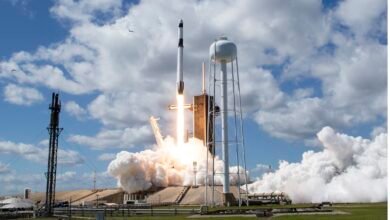Autonomous Vehicles: How Close Are We to Full Automation?

Autonomous vehicles, or self-driving cars, are at the forefront of technological advancements, promising to redefine transportation. The concept of cars operating without human intervention has captivated industries and consumers alike, driving major investments and innovations in artificial intelligence (AI), machine learning, and sensor technology. Companies like Tesla, Waymo, and General Motors are leading the charge, developing self-driving capabilities that aim to enhance safety, efficiency, and convenience. However, while progress has been made, achieving full automation remains a complex challenge involving regulatory, ethical, and technological hurdles.
The road to full automation is filled with promise but also significant barriers. Governments, automakers, and tech firms are working to refine and perfect autonomous vehicle technology, but full implementation is still years away. This article explores the current state of self-driving technology, the levels of automation, challenges faced by the industry, and what the future holds for autonomous mobility. With ongoing research, regulatory frameworks evolving, and public perception shifting, we are inching closer to a world where cars drive themselves entirely.
Levels of Vehicle Automation
The Society of Automotive Engineers (SAE) has established six levels of automation to classify self-driving capabilities. Understanding these levels helps gauge where we are in the transition towards full automation.
- Level 0 consists of traditional cars where the driver has full control.
- Level 1 introduces basic driver assistance features such as adaptive cruise control, which helps maintain speed but requires human supervision.
- Level 2 involves partial automation, where the car can assist with steering and acceleration, though the driver must remain engaged.
- Level 3 enables vehicles to drive autonomously in specific conditions but still requires human intervention in complex scenarios.
- Level 4 represents high automation, allowing the car to drive independently in designated environments, such as geofenced urban areas.
- Level 5 is the ultimate goal—full automation, where a vehicle can operate entirely on its own without human input under any circumstances.
Most current autonomous systems are at Level 2 or Level 3, with only a few experimental models reaching Level 4 in controlled settings.
Current State of Autonomous Vehicle Technology
Several companies have made significant strides in autonomous driving. Tesla’s Full Self-Driving (FSD) software, though marketed as advanced, still requires driver oversight, placing it in Level 2 automation. Waymo, a subsidiary of Alphabet, operates fully autonomous taxis in select locations, achieving Level 4 automation within controlled environments. General Motors’ Cruise has also launched self-driving taxis in specific urban areas, but widespread deployment remains a challenge due to regulatory restrictions and safety concerns.
The impact of AI and machine learning on autonomous driving has been profound. Neural networks and real-time data processing allow these cars to adapt to dynamic road conditions, recognize objects, and make split-second decisions. Despite these advancements, a fully autonomous vehicle that can navigate all road conditions without human intervention remains out of reach. The technology still struggles with unpredictable road scenarios, varying weather conditions, and real-time decision-making. Companies continue refining AI-driven algorithms, but widespread adoption is dependent on further technological improvements, regulatory approvals, and consumer confidence.
Challenges to Full Automation
Technological Limitations
Self-driving cars rely on LiDAR, cameras, and radar to interpret their surroundings, but these sensors can struggle in adverse weather conditions. Rain, fog, and snow can obscure sensor readings, making navigation unreliable. Additionally, AI must improve in distinguishing between objects, pedestrians, and unpredictable movements. Cybersecurity is another major concern, as autonomous cars rely heavily on data networks. A potential hacking incident could compromise passenger safety, raising questions about data encryption and security protocols.
Regulatory and Legal Hurdles
Governments worldwide have yet to establish consistent legal frameworks for self-driving cars. Liability in case of accidents remains a major question—should manufacturers, software developers, or passengers be held accountable? Regulatory approval varies by country and region, slowing the progress of fully autonomous vehicle deployment. Many jurisdictions require a human driver to be present in the vehicle, further delaying the shift to fully autonomous mobility.
Public Trust and Safety Concerns
Despite potential safety benefits, public skepticism remains a challenge. High-profile accidents involving self-driving cars have raised concerns about their reliability. Companies must conduct extensive testing to demonstrate that autonomous vehicles can be safer than human-driven ones. Consumer acceptance will play a crucial role in the widespread adoption of this technology. Additionally, ethical dilemmas such as decision-making in accident scenarios—choosing between protecting passengers versus pedestrians—complicate the moral landscape of automation.
Economic and Social Impacts
The transition to self-driving cars could disrupt industries such as trucking, ride-sharing, and delivery services, potentially displacing millions of workers. However, it could also create new job opportunities in AI development, data analysis, and maintenance of autonomous fleets. Governments and businesses must find ways to balance these economic shifts. The insurance industry would also undergo significant changes, with policies shifting from driver responsibility to manufacturer liability, leading to potential restructuring of coverage models.
The Road Ahead: How Close Are We?
While many experts predict that fully autonomous vehicles could be available within the next 10 to 20 years, widespread adoption will be gradual. Initial applications will likely focus on controlled environments such as ride-sharing services, long-haul trucking, and geofenced urban areas where conditions are more predictable.
The future of self-driving cars depends on breakthroughs in AI, sensor technology, and regulatory cooperation. Infrastructure improvements, such as smart traffic signals and dedicated autonomous vehicle lanes, could accelerate the transition. Public perception and government policies will also play crucial roles in shaping how and when full automation becomes a reality. Another major factor is cost—currently, self-driving technology remains expensive, making it less accessible to the average consumer. However, as technology advances and economies of scale come into play, autonomous cars may become more affordable over time.
Read More: How to Develop and Deploy Autonomous Vehicles in 2023
Conclusion
Autonomous cars are steadily advancing, driven by cutting-edge technology, corporate investments, and a vision for safer, more efficient transportation. While we are not yet at Level 5 autonomy, progress is undeniable. Self-driving technology has the potential to revolutionize mobility, reduce accidents, and reshape entire industries. However, the journey to full automation remains long, with several obstacles still to overcome.
The question is not if but when autonomous cars will become the norm. With continuous improvements in AI, evolving regulations, and increasing public acceptance, we are moving closer to a future where cars drive themselves completely. As the technology matures and infrastructure adapts, the dream of full automation may soon become a reality. However, ensuring safety, security, and public trust will be essential in turning this vision into a widespread reality. Until then, self-driving technology will continue evolving step by step, reshaping how we move and interact with our cars.
FAQs
1. What are autonomous vehicles?
Autonomous cars, or self-driving cars, use advanced AI, sensors, and machine learning to navigate and operate without human intervention.
2. How do self-driving cars function?
They rely on LiDAR, radar, cameras, and AI algorithms to interpret surroundings, make decisions, and maneuver safely.
3. What is preventing full automation?
Challenges include technological limitations, regulatory concerns, cybersecurity risks, public trust, and economic disruptions caused by automation.
4. Are any fully autonomous cars available today?
No, current models operate at Level 2 or Level 3 automation, requiring human oversight. Level 5 full automation is still in development.
5. When will full automation be achieved?
Experts estimate that fully autonomous cars could become mainstream within 10 to 20 years, depending on technological advancements and regulatory approvals.








One Comment